Underground Work
One technology for directing rainwater into groundwater aquifers is dry wells, large tubes underground that can act as temporary storage. These dry wells collect stormwater from the surface and allow it to slowly absorb into the ground, where it can then recharge the groundwater supply.
“In Southern California where most Californians live, there's not much water, so we are looking at different alternatives for diversifying the water portfolio,” says Ali Sharbat, Ph.D.,
Cal Poly Pomona professor of civil engineering. “One alternative is seawater desalinization and getting water from the ocean. Another alternative is water reuse or using wastewater as a source. One important part of the natural water cycle that we have missed for a long time is the stormwater runoff.”
His CPP team has focused much of its research on the long-term efficacy of dry wells as a solution, looking at their engineering, life span, flooding risks, water quality and effects on the soil ecosystem through tests in both the lab and field.
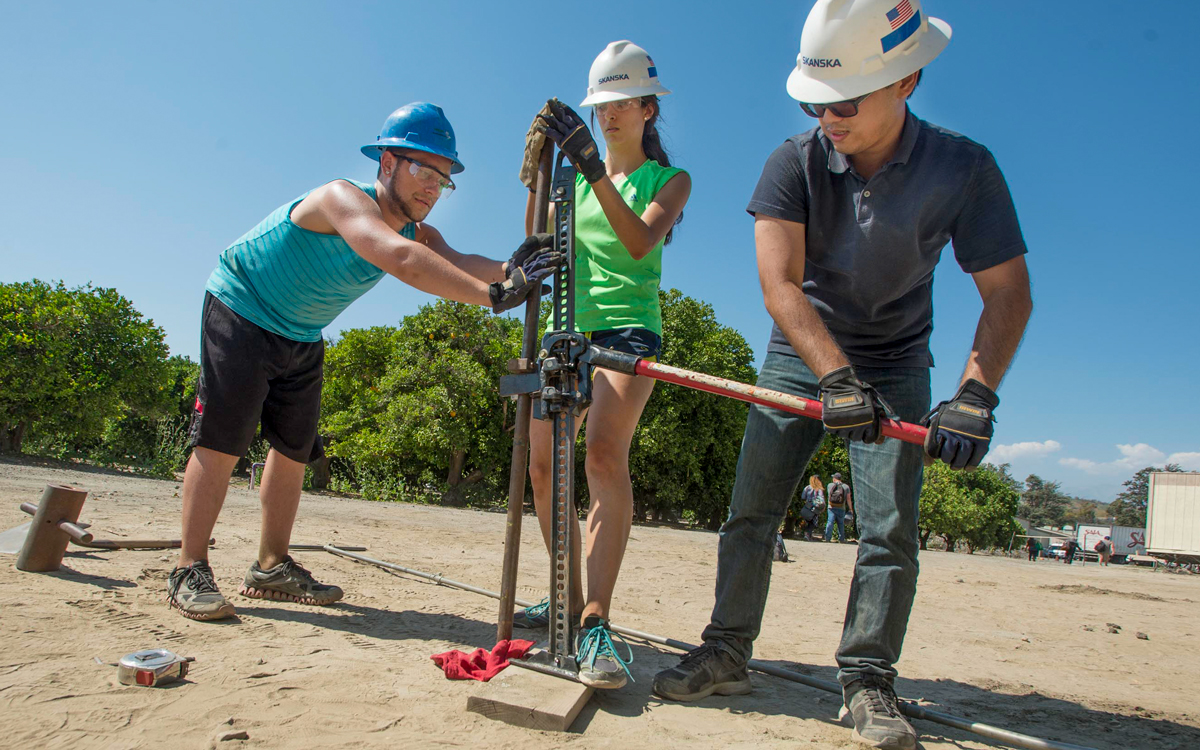
CPP students collect soil samples for testing in the lab to determine if a dry well should be installed at the site.
One ongoing project with the Los Angeles County
Safe Clean Water Program involves finding more affordable procedures to test the dry wells. Other efforts led by undergraduates completing their senior projects have included finding ways to direct stormwater into MacArthur Lake in Los Angeles to irrigate the park and determining how CPP can implement its own mechanisms to capture, treat and reuse stormwater.
“Each year in Southern California, we're letting stormwater flow back into our oceans, and our ability to intervene would provide another source of potable water in the region [through groundwater],” says Seema C. Shah-Fairbank, Ph.D., CPP professor of civil engineering. “If we're able to do that, not only are we able to provide a more sustainable water supply, but we're also going to save on energy costs.”
The CPP team has also submitted several new proposals to expand its research into how Green Stormwater Infrastructure (GSI) or Low Impact Development (LID)—built environments using vegetation and soil to manage stormwater—can help remove contaminants before the water goes into the dry well and groundwater supply.
“This pre-treatment would, in theory, reduce the contaminants in stormwater,” Dr. Shah-Fairbank says. “Once you have that water pre-treated, it can go directly into the dry wells and infiltrate the groundwater. By doing that, we extend the lifespan of the dry well infiltration system. In addition, the LID is a lot easier to maintain because it's above ground.”
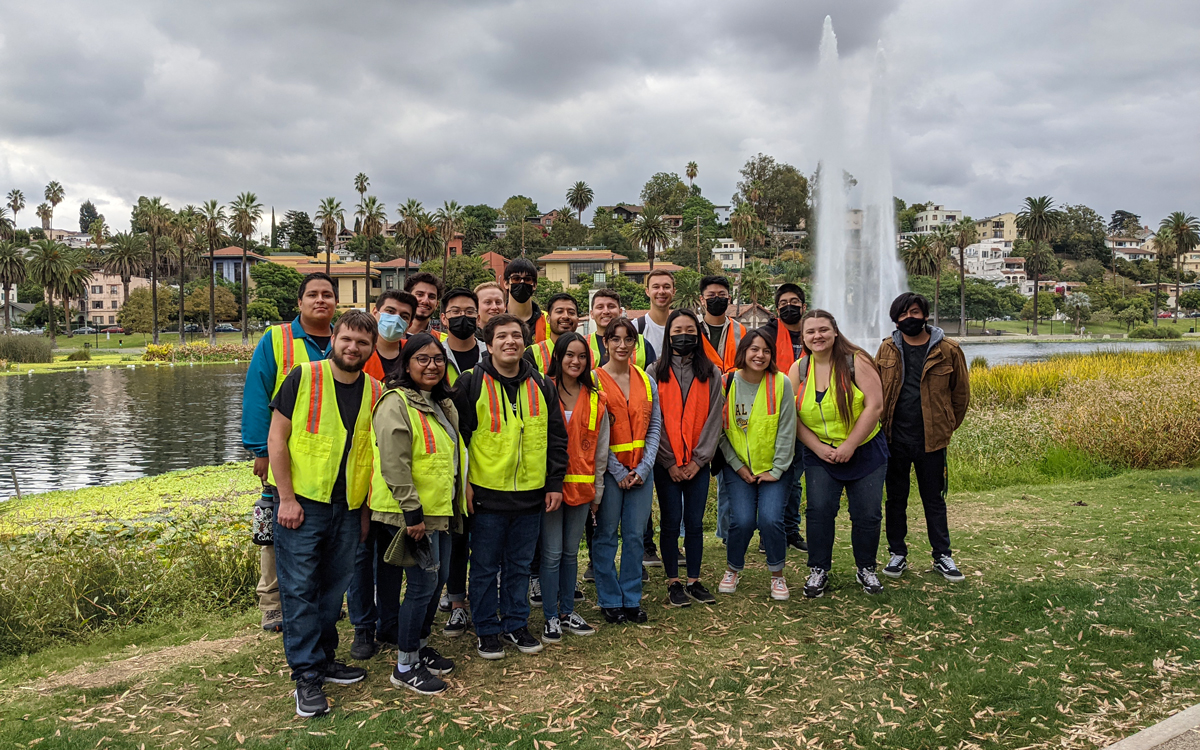
CPP students gather during a field visit to Echo Park in Los Angeles as part of their senior project.
Finally, they are currently leading a project proposal in partnership with Cal Poly San Luis Obispo, Sacramento State and UC Santa Barbara to work with local agencies to evaluate the effects of GSI pre-treatment, dry wells and the soil column on the quality and quantity of stormwater as it absorbs into the groundwater aquifer.
“We're trying to provide recommendations to cities, counties and water districts on the ideal pre-treatment methods that can be implemented to naturally remove contaminants from the stormwater,” says Mehrad Kamalzare, Ph.D., CPP associate professor of civil engineering. “These GSIs are an economical pre-treatment solution when added to the dry wells to make sure that the groundwater would not get contaminated. With all this flood water coming into these dry wells, we want to make sure that the contamination would not find its way into the groundwater.”
Community Effort
Hassan Davani, Ph.D.,
San Diego State assistant professor of water resources engineering, focuses on the
dual aspects of rain harvesting for water reuse and mitigating flooding in vulnerable communities.
“In vulnerable communities that are marginalized, the infrastructure, health, condition and quality of pipes is different than a luxury community … and rain events like [the one in January] can have a disproportionate flooding impact on them,” Dr. Davani says.
Through two projects—one in Imperial Beach funded by the National Science Foundation and one in the East Bay region funded by the National Oceanic and Atmospheric Administration—he is studying how rain gardens, a type of green infrastructure built into yards, can mitigate the effects of flooding. A rain garden is a depressed section of landscape that can collect runoff, filter pollutants and help rainwater reabsorb into the soil and groundwater.
To determine their effectiveness, Davani uses computer models and small physical models of rain gardens in the lab to study their flow rates, capacity for controlling flooding and ability to remove contaminants. He has also set up a camera system and sensors to monitor existing rain gardens during rain events.
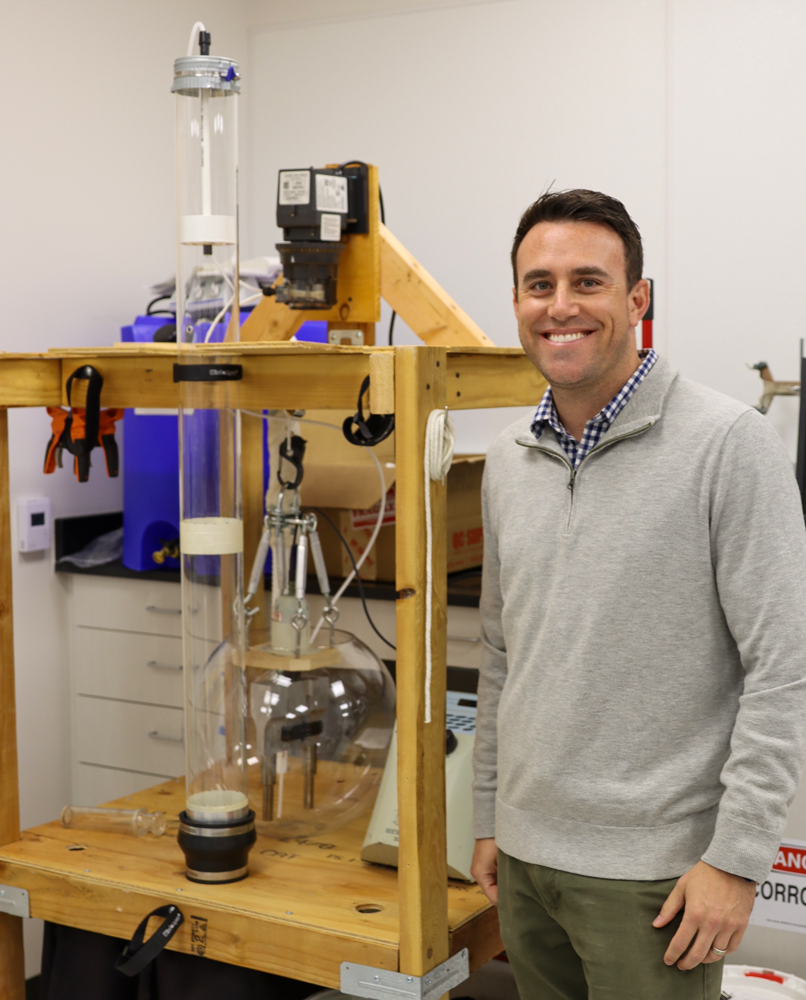
SDSU master's student Ryan McDowell studying under Dr. Hassan Davani stands with a prototype rain garden in the lab.
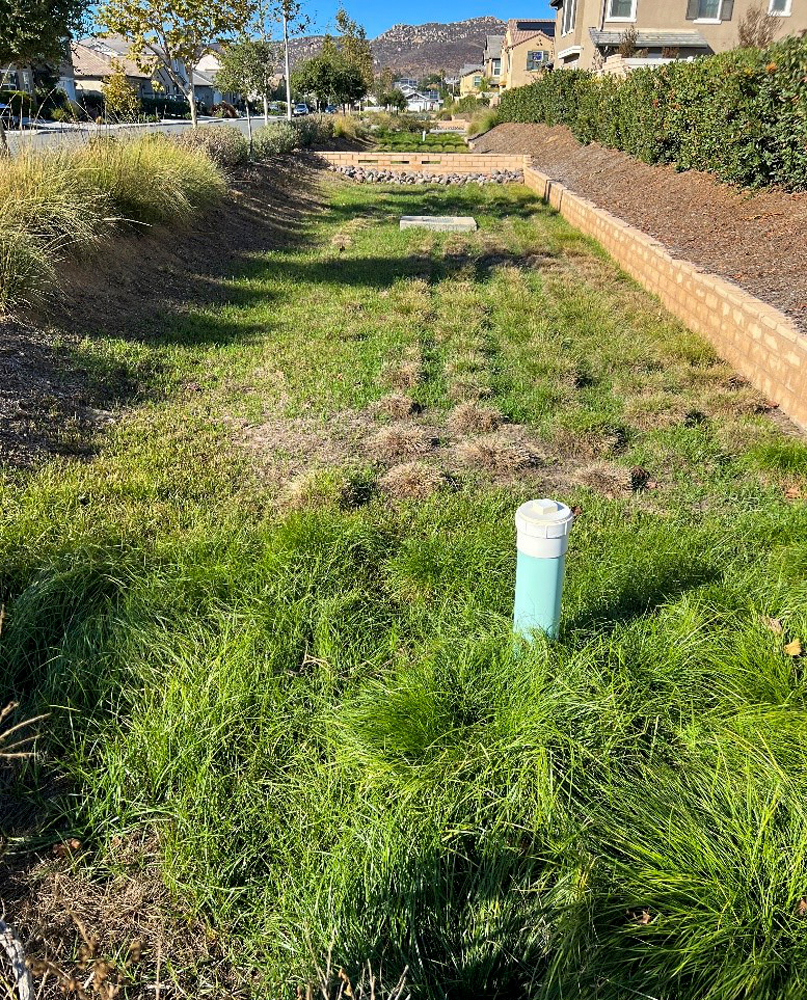
An active rain garden in San Diego.
“Members of communities that suffer from flooding can be a part of the solution,” Davani says. “We want to avoid situations like we had in January when there is a big rain and pollution is washed off into the ocean. … This aspect is very important, too, when it rains—it is not just about flooding and not just about saving some of the water.”
In Imperial Beach, the project also enables Davani and a team of students to perform education and outreach about rain harvesting, a method of collecting rainwater for immediate reuse. For example, rain barrels can collect the rainwater and be connected to people’s homes for toilet flushing or watering. The team is conducting social surveys, presentations and focus groups with local residents to gauge their interest and needs in implementing rain harvesting techniques like this. Their findings will inform recommendations for potential incentives that policy makers could implement to encourage residents to adopt the technologies.
“Homeowners should do it for savings on their water bill, but … if we can capture some part of the rain in a decentralized way in different units,” it can also address the impacts of flooding and pollution, Davani says.
A Green Solution
Rain gardens, however, are not the only green infrastructure that can help clean storm runoff before it either seeps into the groundwater or flows to the ocean and waterways. Sandrine Matiasek, Ph.D.,
Chico State associate professor of earth and environmental sciences, studies a range of these technologies to see how well they filter the stormwater, including rain gardens, porous pavement areas and shallow soil-based channels called bioswales.
“The first benefit is the quantity of water that runs off is reduced because water is allowed [to seep] into the ground,” rather than storm runoff passing over impermeable surfaces, creating flooding issues downstream, Dr. Matiasek says. “Then there's the water quality benefits where plants, soils and microbial communities will retain and use the contaminants that are in the water for their own metabolism.”
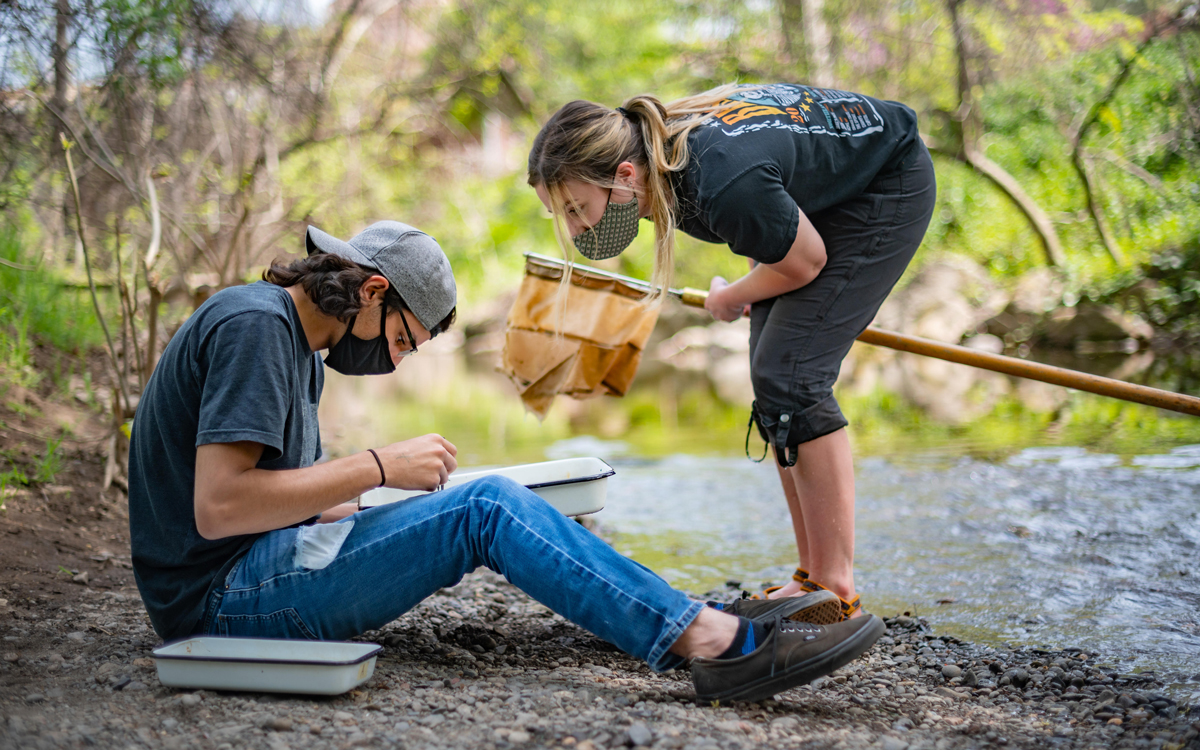
Chico State environmental science majors Adil Syed, left, and Kalyn Allen, right, sort macroinvertebrates from a part of Big Chico Creek on campus to compare the creek's water quality to storm runoff.
Much of her ongoing work looks directly at bioswales in the area around Chico State. In one project she oversees, a student team is studying how well plants absorb metal contaminants, where in the plant the metals accumulate and to what extent they can take in the metals before the green infrastructure causes damage to the surrounding environment.
In addition, one of her master’s students is studying the role of storm frequency on the performance of bioswales—namely how a channel’s drying out due to drought affects the ability of runoff to absorb into the ground. Another master’s student is measuring the amount of water that flows in versus out of a bioswale, demonstrating how much water infiltrates the soil to recharge the groundwater. Finally, a pollution-focused undergraduate research course Matiasek will teach next year will monitor the bioswales on the Chico State campus to generate more performance data.
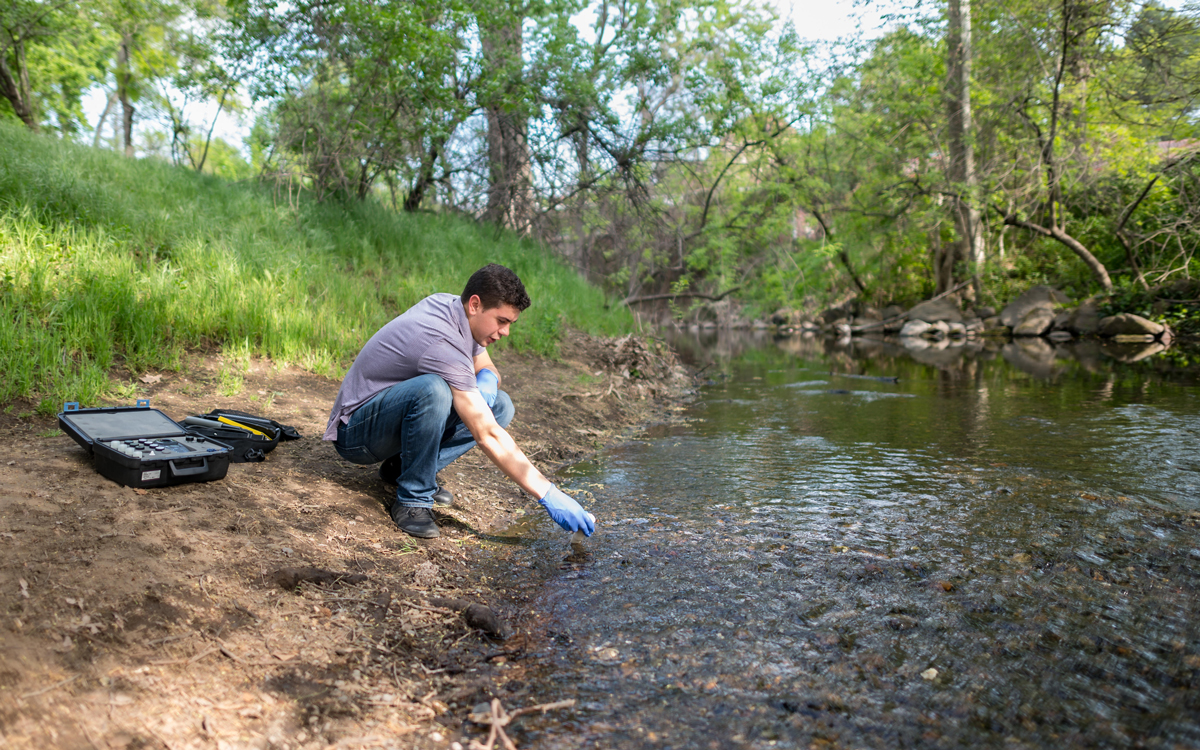
Chico State environmental science major Zach Burr collects a water sample from Big Chico Creek to measure its clarity and compare the quality to on-campus storm runoff.
“Whether it's coastal or inland, returning water that is at the surface of the earth [back] to the ground is really smart,” Matiasek says. “It can recharge groundwater, which can be a source of drinking water—and by replenishing the shallow groundwater, we are helping the creeks run longer over the course of the year, which helps our urban landscape. … The water cycle can be quick,
or we can help it go a little slower by passing it through soils, and that helps the whole ecosystem in general by providing water to the soil and the plants that depend on it, and also flushing pollutants out.”
Help for the Establishment
A team from
California State University, Northridge has its efforts turned toward California’s existing water infrastructure—working with the California Department of Transportation (Caltrans) to study the performance of the state’s culverts system. These large pipes redirect stormwater away from roads and highways to mitigate flooding.
“Culverts are stormwater control structures, whose functionality may become compromised through sedimentation and some biological processes, and basically, we are working on how we can improve their performance,” says Tadeh Zirakian, Ph.D., CSUN associate professor of civil engineering.
In addition, the system often directs the runoff into smaller basins where the stormwater can infiltrate into the ground—raising concerns around how much pollution that water is transporting into the aquifers.
“If a pipe is open and conveying stormwater that is polluted, it will enable groundwater to start receiving a great deal of contamination,” says Sami Maalouf, Ph.D., CSUN associate professor of civil engineering. “Stormwater carries with it a great deal of pollutants of a biological and chemical nature that adversely affect the sanctity of groundwater.”
To conduct a system assessment, student teams visited 500 locations across the state to test the condition, longevity, contamination and rehabilitation needs of the culverts there. Experiments revealed that the health of the pipes was highly dependent on location and the materials present in the runoff. For example, pipes near agricultural areas were more corroded by the microorganisms in the water flowing from those sites. The team used the findings to provide recommendations to Caltrans for extending the lifespan of the system.
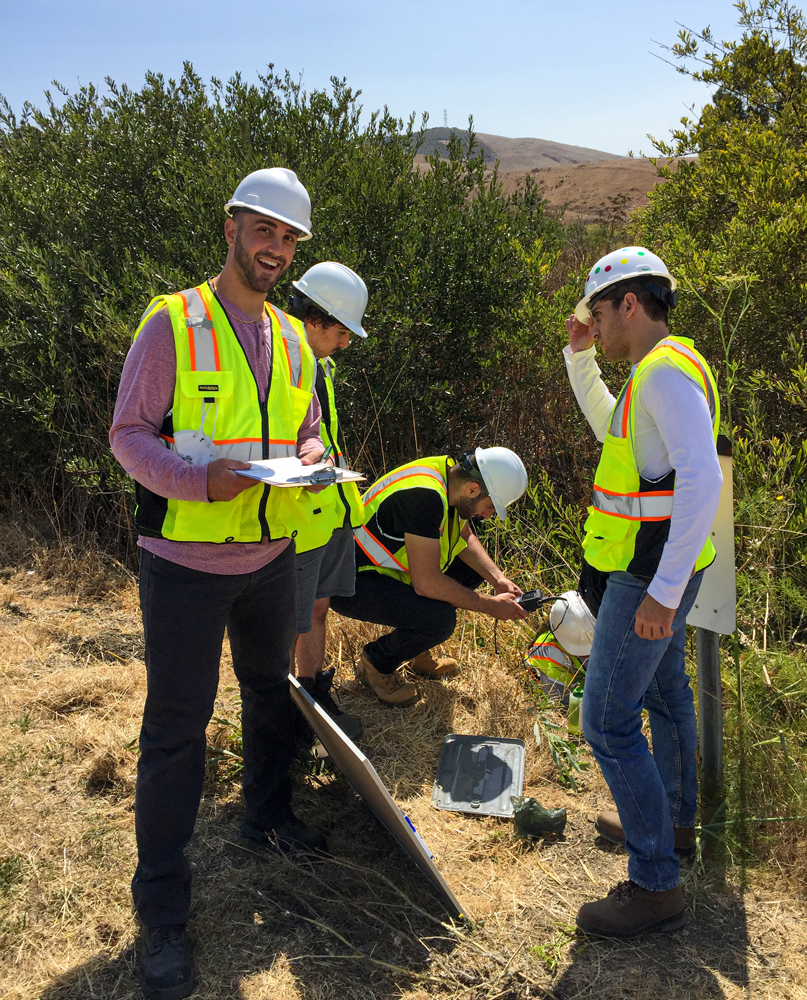
CSUN students perform a soil resistivity test at a culvert site.
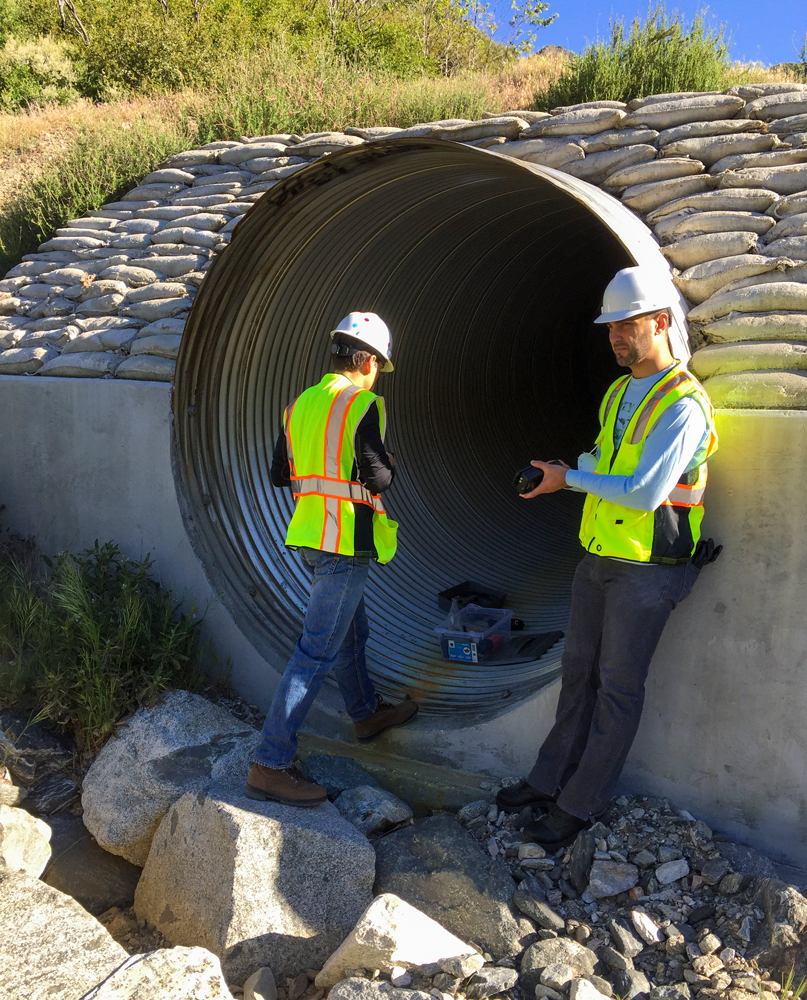
CSUN students work at the opening of a corrugated steel culvert.
The multi-year project employed 17 undergraduate students and two graduate students, one of whom was then hired by Caltrans based on his role in the work, and resulted in a 2019
published report, conference presentations and student-produced articles. Additionally, a student team shot and produced a training video for running the experiments.
Recently, Caltrans reengaged the team to consider next steps for rehabilitating the pipes. The team hopes it will also be an opportunity to suggest alternative measures that not only restore the system but improve its ability to capture stormwater and recharge groundwater.
“We had a lot of rain in California, and we don't want to waste that invaluable resource,” says David Boyajian, Ph.D., CSUN associate professor of civil engineering. “This is part and parcel of how to capture that and also reroute water from being potentially hazardous to motorists on highways.”